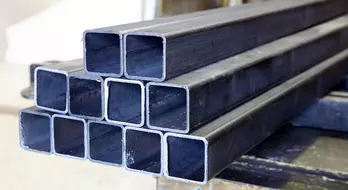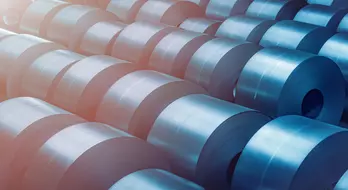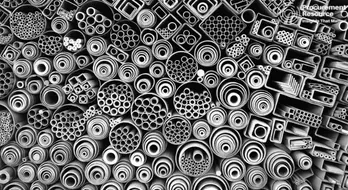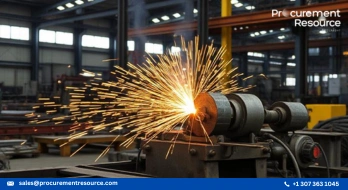Product
Steel I Beam Price Trend and Forecast
Steel I Beam Price Trend and Forecast
Steel I Beam Regional Price Overview
Get the latest insights on price movement and trend analysis of Steel I Beam in different regions across the world (Asia, Europe, North America, Latin America, and the Middle East & Africa).
Steel I Beam Price Trend for Q1 2025
Steel I-beam markets diverged significantly across regions in the first quarter of 2025. Asian prices briefly rebounded after China's stimulus announcement but quickly fell back as construction activity remained depressed by the ongoing property crisis. Despite some mills announcing production cuts, the market continued to face downward pressure from excess capacity and competitive Chinese exports flowing into neighbouring countries.
Steel I Beam Price Chart

Please Login or Subscribe to Access the Steel I Beam Price Chart Data
European I-beam prices steadily strengthened throughout the quarter, recovering from their late-2024 lows. Mills successfully pushed through several rounds of price increases as supply tightened due to maintained winter production cuts. Specialized structural sections became particularly constrained, and distributors actively built inventories in anticipation of further price hikes, creating additional market momentum.
The North American I-beam market experienced dramatic upheaval following March's implementation of 25% steel tariffs. Prices jumped sharply as supply chains were disrupted by the sudden removal of Canadian and Mexican exemptions. Construction projects scrambled to address budget impacts while distributors extended lead times and implemented allocation systems for certain products. Smaller builders reported significant challenges in absorbing these rapid cost increases.
Analyst Insight
According to Procurement Resource, regional price divergence will likely persist through 2025, with North American prices remaining elevated due to trade barriers while Asian markets continue struggling with structural overcapacity despite occasional stimulus-driven demand boosts.
Steel I Beam Price Trend for the Second Half of 2024
Steel I-beam prices declined steadily throughout the second half of 2024, following the broader steel market downturn. Asia saw the sharpest drops as Chinese manufacturers, facing weak domestic demand, increased exports at competitive rates. This oversupply pushed I-beam prices in the region to multi-year lows.
European I-beam markets hit bottom around August-September, reaching their lowest levels since 2020. The market then experienced a modest recovery in October when major producers implemented price increases in response to rising raw material costs and positive signals from China's economic stimulus announcement.
North American I-beam prices initially stabilized faster than other regions, suggesting the market had reached its floor earlier. However, this recovery slowed significantly following the U.S. election as market participants adopted a cautious approach due to the President-elect's proposed tariffs on steel imports from Mexico, Canada, and China.
Construction activity, the primary driver of I-beam demand, remained sluggish across most regions throughout the period, limiting any substantial price recovery despite producer efforts to raise prices.
Analyst Insight
According to Procurement Resource, the Steel I-Beam market is expected to stabilize in early 2025, supported by rising raw material costs, Chinese economic stimulus, and potential trade barriers, though actual recovery will depend heavily on construction sector performance and implementation of new trade policies.
Steel I Beam Price Trend for the First Half of 2024
Steel I beams, also known as universal beams, are structural elements made from steel and widely used in construction due to their strength, durability, and ability to bear heavy loads. These beams are produced through the hot-rolling process, where steel is shaped into an L shape to provide maximum resistance to bending forces. During the first half of 2024, the Steel I Beam market exhibited noticeable fluctuations.
Following some initial momentum, the balance between supply and demand in China largely kept the market steady throughout the period. While the market remained anchored due to steady upstream and downstream factors, weak global demand exerted pressure on domestic prices as export opportunities were limited. The monthly average prices in the Chinese market, after some delayed correction, went from about 552 USD/MT in January’24 to around 537 USD/MT in June’24. China continued to dominate as the leading producer and supplier in the global steel market. Overall, sentiments remained mixed across the first half of the year.
Analyst Insight
According to Procurement Resource, given the current supply conditions and global procurements, not much change is expected in the Steel l Beam prices going forward. The market is expected to remain consolidated going forward.
Steel I Beam Price Trend for the Second Half of 2023
The construction industry outlook of the H2'23 phase was driven by higher fuel surcharges and increased metal bar prices, although steel I-beam prices remained stable as compared to the previous quarters. Despite this stagnancy, the market still faces bearish sentiments, particularly due to the weakening of Chinese imports.
Buyers started to consider alternative sources outside China due to the potential infeasibility of Chinese sourcing. China's economic downturn and the ongoing trade dispute with the U.S. resulted in decreased steel demand, with Chinese imports of ores and concentrates declining and causing a negative impact on the global metals market.
Although there was some relief with the rise in the steel demand in China for the second half of 2023, the overall economic slowdown has led to a slump in global base metals. The decline in Chinese manufacturing has also affected U.S. construction, as the reduction in Chinese imports has led to lower steel prices in the U.S. Government officials noted economic damage due to reduced Chinese imports, affecting various sectors from electronics to building materials.
The trade war has increased the cost of building materials in the U.S. with additional taxes on Chinese imports contributing to this rise. The excess supply of Chinese steel has caused a price decline throughout Asia, prompting countries like Indonesia, Thailand, and India to support their local markets.
Analyst Insight
According to Procurement Resource, the price of Steel I Beam is estimated to incline in the next half of the new year, which is expected to be driven by the rising trade imbalances and surge in feedstock prices.
Steel I Beam Price Trend for the First Half of 2023
Asia
During the first half of the year 2023, Steel I Beam observed mixed market trend, especially in China. After having declined continuously in the previous quarters, there were some fresh demands both from domestic and international markets. With Chinese domestic construction and civil engineering sectors attempting a revival, growth was seen in price trend, and as the crude oil prices started normalizing in the global markets, a rise in export queries was also observed. So, an inclination of about 5% in Steel I Beam prices was seen in the first quarter.
However, with little hope in the market after a long time, the suppliers started pushing large amounts of products into the market, which flooded the inventories with oversupply and widened the supply and demand gap even further. Because of this, the prices again shifted gears and started declining in the second quarter and declined about 8% within quarter two.
Analyst Insight
According to Procurement Resource, given the disturbed supply and demand dynamics, the Steel I Beam market performance does not seem to be improving in the upcoming months. Projections do not look very promising.
Steel I Beam Price Trend for the Second Half of 2022
Asia
Steel I Beam is a beam made of steel with an L-shaped cross-section; these beams are extensively used in construction and civil engineering sectors, primarily used for its load-bearing support to uphold ceilings and other heavy structures.
During the said time period of H2’2022, China had just come out of an absolute lockdown, which was put in place to contain the COVID-19 pandemic. The construction sector faced one of the most severe impacts of this industrial shutdown.
Since the market was closed for such a long time, the unused stocks were already lying in the inventories, and the war between Russia and Ukraine had given another blow to the global economy. So, with high inventory levels and limited demands, the Steel I Beam price trend remained on a downward trajectory for most of the discussed time, with around a 13% decline in prices till November. Though the market tried to pick up at the year-end in December, overall sentiments remained dull.
Analyst Insight
According to Procurement Resource, with the given decline in market trend, the Steam I Beam price trend are projected to improve going forward.
Steel I Beam Price Trend For the First Half of 2022
Asia
In the Asian market, concerns regarding the supply in Q2 2022 were also raised, and the production costs associated with rising energy prices continued to have an impact on steel I beam prices. Between the start of Q1 and nearly the end of the quarter, steel I beam prices in Tangshan City rose by 13%, while CFR steel prices throughout Southeast Asia rose by 33%.
Due to suppliers in India, Japan, and South Korea focusing more on the European steel markets as a result of the situation between Russia and Ukraine, emerging Chinese enterprises now have the opportunity to become "dominant" suppliers in the Asian market.
North America
The majority of 2022 had a significant impact on US steel I beam prices from a persistently high supply, conservative service centre purchasing, and sluggish downstream demand. A market oversupply that has continued since steelmakers overshot demand in the fourth quarter of 2021 has caused prices to drop by 48% since the beginning of 2022.
Beginning the second quarter at 1,500 USD/st, the US Hot-Rolled Coil Index matched the year-to-date high reached in early April on an ex-works Indiana basis.
Europe
Due to lower manufacturing demand and refilled inventories as a result of Russia's invasion of Ukraine in Q2 2022, steel I beam prices in Europe decreased. The typical flat steel product, hot-rolled coil, declined by about a third since reaching a record in March. Since February, steel I beam prices hadn't been below 1,000 EUR/MT (1,042 USD).
Steel I Beam Price Trend For the Fourth Quarter of 2021
Asia
In the final quarter of the year, the Chinese steel I beam market price was recorded at 840 USD/MT in October which reduced to 731 USD/MT in December. The rise of the Indian steel industry had been aided by the availability of raw materials such as iron ore and low-cost labour. As a result, the steel sector's contribution to India's manufacturing output expanded dramatically.
In 2022 and beyond, China's crude steel production will most likely be restricted, limiting the annual output to levels close to those in 2021. This action is designed to provide the steel industry with more flexibility as it transitioned to a low-carbon economy, as well as to quiet market speculation about its production reduction, which had caused price volatility.
Europe
Prices continued to rise due to a lack of supply. End-user customers were not ready to accept the hikes, while stockists were forced to lower their inventory levels due to limited credit lines. The prices were recorded in the range of 700-1000 EUR/MT.
North America
The market price of the beam was recorded at 1355 USD/MT in the fourth quarter. Imports of some steel products, such as hot-rolled coil, increased in the second half of 2021, as rising US prices made lower-cost imports more tempting despite taxes. As long as regional costs remain much higher than global pricing, imports will continue to play a large role in the US market.
Latin America
Following a year of strong domestic steel demand in 2021, which drove prices to all-time highs, the Brazilian steel sector is projected to suffer downward pressures in 2022 as a result of the economic downturn, full inventories, and diminishing end-user demand.
Steel I Beam Price Trend For First, Second and Third Quarters of 2021
Asia
Steel I beam prices were recorded at 638 USD/MT at the start of the year, which then rose to 796 USD/MT in September. Prices continued to soar, with benchmark hot-rolled coil (HRC) commodities reaching an all-time high of 58,000 INR/MT (ex-Mumbai) as a result of supply constraints and increased demand from the construction, automotive, and white goods industries.
In Mumbai commodities market in January 2020, the same grade of HRC was selling for 37,500 INR/MT. At the end of the fiscal year ending March, domestic flat Hot Rolled Coiled (HRC) prices had climbed by 40% since April 2020. Within this one-year period, prices for long steel, or TMT, were nearly 30% higher.
Europe
Steel I beam prices in the first three quarters was recorded in the range of 970-1000 EUR/MT. There was a 13.3% rebound in the demand for structural steel. Due to stringent trade restrictions, central and southern European clients' demand increased dramatically, resulting in the highest beam price level in Europe, at 950 EUR/MT.
Prices in southwest Europe were 50 EUR/MT lower. However, several consumers in Spain got emails indicating that a major local maker had stopped taking new orders, which some linked to the company's plan to sell at higher prices later.
North America
Steel I beam prices were recorded in the range of 1315-1355 USD/MT in the first half of the year. The huge discrepancy between demand and supply, as well as the time it took for supply to catch up and replenish depleted supplies of the alloy, kept prices high.
During the early months of the COVID-19 pandemic shutdowns, several factories in the United States halted production, assuming the world was on the verge of a deep recession. Iron ore and steel demand, on the other hand, experienced a temporary decline in demand. The impact of the pandemic on consumer spending habits and consumption patterns resulted in much higher demand in the industry than expected.
Latin America
The market price in Mexico for the first three quarters was recorded in the range of 9000–9500 MXN/MT. A restocking campaign on the distribution side benefited steel factories in Brazil. In 2021, crude steel production increased 14.7% year over year to 36.03 MT, with the industry operating at 73% of its capacity. Imports accounted for the majority of market replenishment in 2021, accounting for 4.97 MT, up 144.1% from 2020.
Steel I Beam Price Trend For the Year 2020
Asia
In 2020, the Chinese steel I beam prices were recorded at 565 USD/MT in January and 570 USD/MT in December. Despite the fact that China's industrial steel production increased by 150% in the same year, the country's imports of the alloy increased by 150% to 38.56 MT.
Imports rose as businesses struggled to fulfil increasing demand driven by the government's efforts to pull the economy out of a coronavirus-induced slump. The prices recovered from a deep trough in April 2020, and continued to rise throughout the rest of the year as economic and industrial activity picked up.
Europe
Average steel I beam prices were recorded at 425 USD/MT due to decreased consumption. This was the steepest drop in the alloy’s consumption in the EU's history. Imports fell even more in 2020, following a downward trend that began in 2019, but this time owing primarily to the pandemic's influence on domestic demand.
The economic and industrial lockdown implemented in response to the Covid-19 epidemic resulted in an exceptionally low demand for the alloy in the second quarter of 2020. After the government's COVID restrictions were partially lifted in the third quarter, industrial activity restarted, and steel I beam prices dropped.
The average weekly price assessment for domestically delivered steel reinforcing bar (rebar) in Northern Europe was 573 EUR in December 2020, according to the upstream market.
North America
In 2020, steel I beam prices were recorded on an average of 500-800 USD/MT. During the coronavirus epidemic, the demand dropped at first, but swiftly rebounded.
Latin America
In response to the COVID-19 pandemic, the Mexican government introduced a USD 14.2 billion infrastructure investment plan with private sector enterprises for 29 projects in October 2020 as a part of the Economic Recovery Agreement. Brazilian steel I beam market price were recorded at 4.29 USD/kg.
Procurement Resource provides latest prices of Steel I Beam. Each price database is tied to a user-friendly graphing tool dating back to 2014, which provides a range of functionalities: configuration of price series over user defined time period; comparison of product movements across countries; customisation of price currencies and unit; extraction of price data as excel files to be used offline.
About Steel I Beam
Steel I Beam is basically a beam with an I shaped cross-section. The horizontal or parallel section of this beam are called flanges while its vertical section is known as a ‘web’. Steel I Beam is represented by dimensions of web and flange. Further, in I-Beam, the size of web is greater than the size of flange unlike the H-beam.
Steel I Beams are usually made of structural steel and are widely utilised in construction and civil engineering. It is commonly termed an “I” beam because of its shape, which provides great load bearing support when used horizontally or standing as columns.
Steel I Beam Product Details
| Report Features | Details |
| Product Name | Steel I Beam |
| Industrial Uses | Pillars, Roofs, Walls, Floors, Stairs , Truck-trailers, EOT cranes and its gantry, Ship building/construction, Factory sheds, Conveyors and boilers, Agricultural equipments |
| Supplier Database | Jindal Steel & Power Ltd, G.D. Metsteel Pvt. Ltd, Ferrite Structural Steels Private Limited, Reliance Steel & Aluminum Co. |
| Region/Countries Covered | Asia Pacific: China, India, Indonesia, Pakistan, Bangladesh, Japan, Philippines, Vietnam, Iran, Thailand, South Korea, Iraq, Saudi Arabia, Malaysia, Nepal, Taiwan, Sri Lanka, UAE, Israel, Hongkong, Singapore, Oman, Kuwait, Qatar, Australia, and New Zealand Europe: Germany, France, United Kingdom, Italy, Spain, Russia, Turkey, Netherlands, Poland, Sweden, Belgium, Austria, Ireland Switzerland, Norway, Denmark, Romania, Finland, Czech Republic, Portugal and Greece North America: United States and Canada Latin America: Brazil, Mexico, Argentina, Columbia, Chile, Ecuador, and Peru Africa: South Africa, Nigeria, Egypt, Algeria, Morocco |
| Currency | US$ (Data can also be provided in local currency) |
| Supplier Database Availability | Yes |
| Customization Scope | The report can be customized as per the requirements of the customer |
| Post-Sale Analyst Support | 360-degree analyst support after report delivery |
Note: Our supplier search experts can assist your procurement teams in compiling and validating a list of suppliers indicating they have products, services, and capabilities that meet your company's needs.
Steel I Beam Production Process
- Production of Steel I Beam via Fabrication and Welding
In order to fabricate Steel I Beam, beam parts are assembled and SAW welded on an on-line assembly machine and corimpex welding machine. Welding is often carried out using submerged arc welding machines as this enhances the quality of weld.
Methodology
The displayed pricing data is derived through weighted average purchase price, including contract and spot transactions at the specified locations unless otherwise stated. The information provided comes from the compilation and processing of commercial data officially reported for each nation (i.e. government agencies, external trade bodies, and industry publications).
Assistance from Experts
Procurement Resource is a one-stop solution for businesses aiming at the best industry insights and market evaluation in the arena of procurement. Our team of market leaders covers all the facets of procurement strategies with its holistic industry reports, extensive production cost and pre-feasibility insights, and price trends dynamics impacting the cost trajectories of the plethora of products encompassing various industries. With the best analysis of the market trends and comprehensive consulting in light of the best strategic footstep, Procurement Resource got all that it takes.
Client's Satisfaction
Procurement Resource has made a mark for itself in terms of its rigorous assistance to its clientele. Our experienced panel of experts leave no stone unturned in ensuring the expertise at every step of our clients' strategic procurement journey. Our prompt assistance, prudential analysis, and pragmatic tactics considering the best procurement move for industries are all that sets us apart. We at Procurement Resource value our clients, which our clients vouch for.
Assured Quality
Expertise, judiciousness, and expedience are the crucial aspects of our modus operandi at Procurement Resource. Quality is non-negotiable, and we don't compromise on that. Our best-in-class solutions, elaborative consulting substantiated by exhaustive evaluation, and fool-proof reports have led us to come this far, making us the ‘numero uno' in the domain of procurement. Be it exclusive qualitative research or assiduous quantitative research methodologies, our high quality of work is what our clients swear by.
Related News
Table Of Contents
Our Clients

Get in Touch With Us

UNITED STATES
Phone:+1 307 363 1045

INDIA
Phone: +91 8850629517

UNITED KINGDOM
Phone: +44 7537 171117
Email: sales@procurementresource.com





